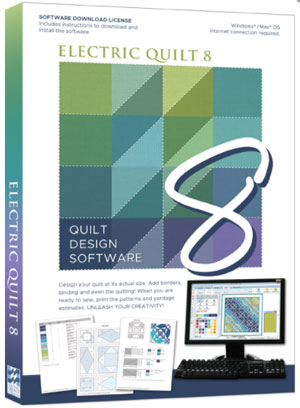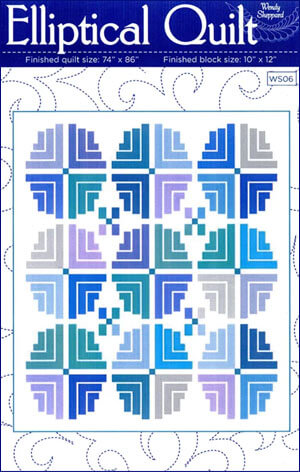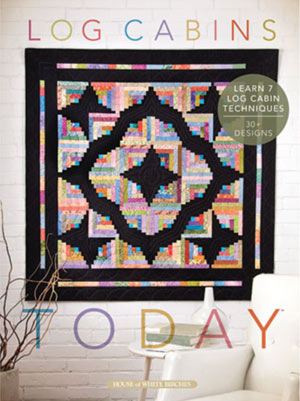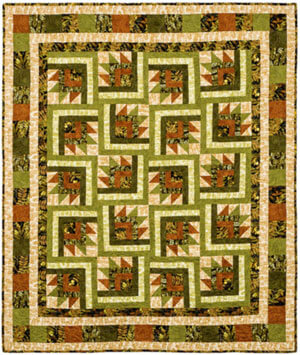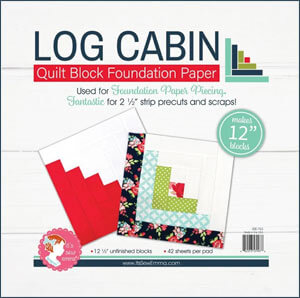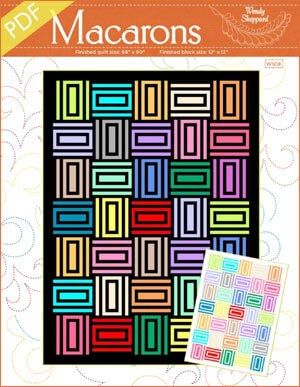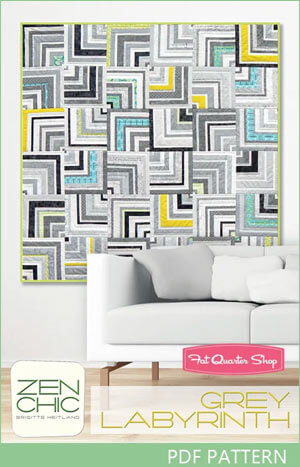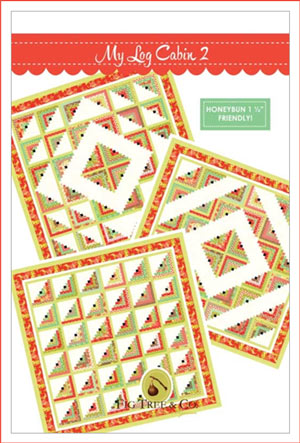- Home
- Quilt Design Inspiration
- Log Cabin Designs
Log Cabin Quilt Designs
Basic Block + Easy Design = Great Quilts for Beginners!
This post contains affiliate links, for which I receive compensation.
All of the Log Cabin quilt designs shown below start with a basic log cabin block,—half dark fabrics and half light, pieced around a center square.
To create the different layout designs, simply flip and rotate the blocks to change the placement of the color values.
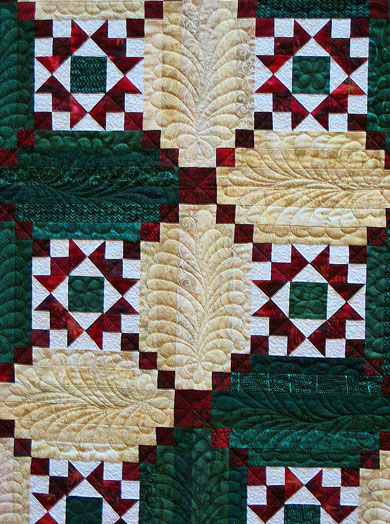 'Stars and Logs' by Linda Kennedy
'Stars and Logs' by Linda KennedyAny quilt pattern constructed with half square triangles can be recreated with Log Cabin blocks.
It's a great beginner quilt pattern.
All the block(s) use just strips subcut into rectangles and squares—no bias edges to contend with—so enjoy creating your very own Log Cabin.
My Favorite Quilt Design Software
All the free patterns and block/quilt illustrations on this site were created in either EQ7 or EQ8—my favorite quilt design software.
This program makes it so easy to audition different
colors and values with just a few mouse clicks.
Rotate and flip the blocks with another series of clicks.
I can't imagine going back to graph paper and colored pencils.
Or worse yet—simply keeping my fingers crossed. Fabric is much too expensive!
The box contains a software download license—License ID and Password—and a booklet to get you through installation and get you started. There is no disk as in the past.
Download the software onto your computer from the EQ website using the ID and password as directed. At the time of download you can choose either PC or MAC.
I LOVE Electric Quilt!
I hope you do to.
Playing with log cabin quilt designs couldn't be easier! I wouldn't consider my quilt studio complete without Electric Quilt.
The Basic Log Cabin Quilt Block
A typical Log Cabin quilt block is stitched with strips added in either a clockwise or counterclockwise fashion around a center square.
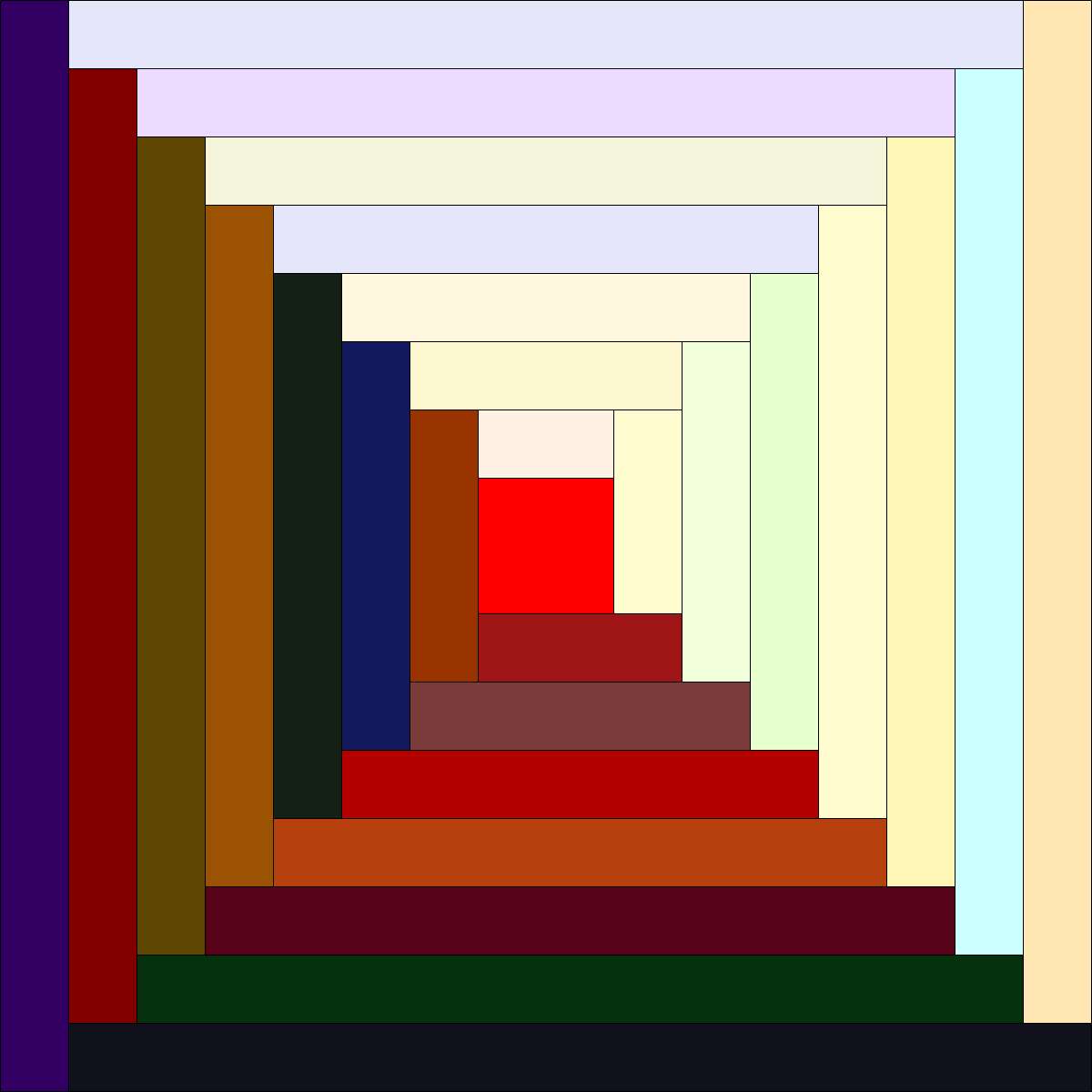 Log Cabin Quilt Block
Log Cabin Quilt BlockLight strips added first
Ours has 7 rounds of logs added clockwise, but yours can be any number of rounds. The choice is up to you as to how much piecing you'd like to do.
Is adding logs in one direction better than the other?
I learned to sew the Log Cabin by adding strips
in a clockwise order, but really the most important thing is to make them all the same.
All clockwise or all counter-clockwise. It's your choice!
Take a closer look and you will see that after the center red square, the next log was a light followed by another light and then two dark logs.
If the first two 'logs' you add are light fabrics, the last two you add will be dark. The resulting design will be slightly more 'dark' than light.
If you would prefer to have it 'lighter', then the first two logs you add should be dark. The last two will then be light. Again, the ultimate design choice is up to you!
With a good contrast between your 'light' and 'dark' fabrics, the finished blocks have a strong diagonal line through the center. And that's VERY important for all the designs below.
Log Cabin Quilt Designs
While you can arrange your blocks any way you wish (and it's a lot of fun!), there are several recognized layout designs with names reminiscent of the pioneer times when this block first appeared in American culture, sometime in the 1860's.
In all of the Log Cabin quilt designs shown below the number of blocks in the rows and columns is underneath the image.
Straight Furrows
Like the fields the pioneers plowed, this design emphasizes the straight line. To create a symmetrical quilt with this horizontal setting you'll need an odd number of rows and an even number of columns.
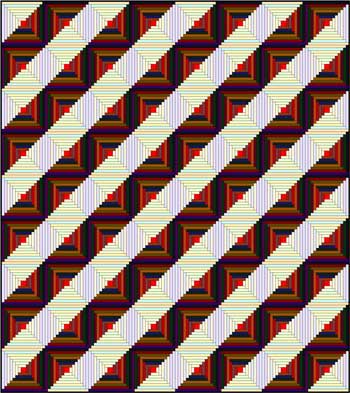 8x9
8x9Straight Setting
A simple setting to showcase your fabric scraps!
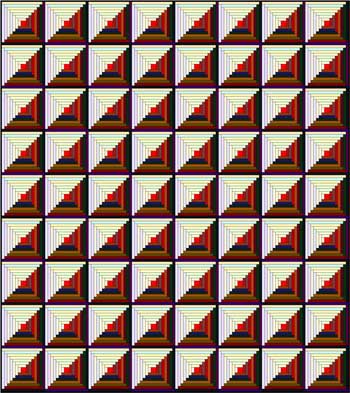 8x9
8x9ZigZag or Streaks of Lightning
There's lot of energy in this layout. You'll need even numbers of columns for a symmetrical layout.
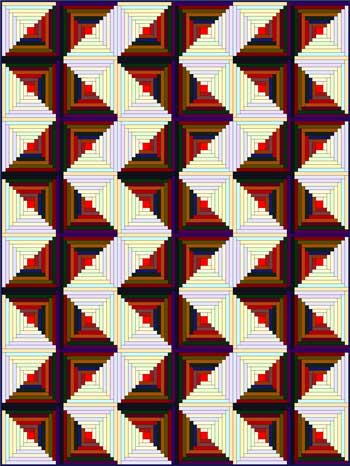 6x8
6x8For ideas how to quilt your own "Streak of Lightning" click here.
Pinwheels
To complete the pinwheels, you'll need even numbers of rows and columns.
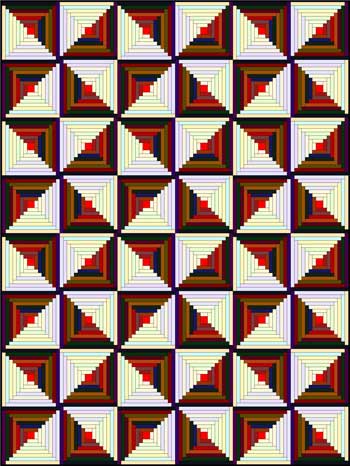 6x8
6x8Sunshine and Shadows
Use even numbers of rows and columns to complete this quilt design.
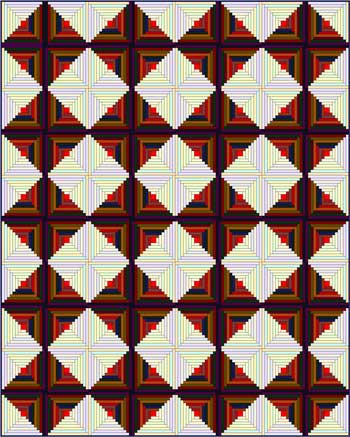 8x10
8x10Chevron
Use even numbers of columns to have a balanced chevron.
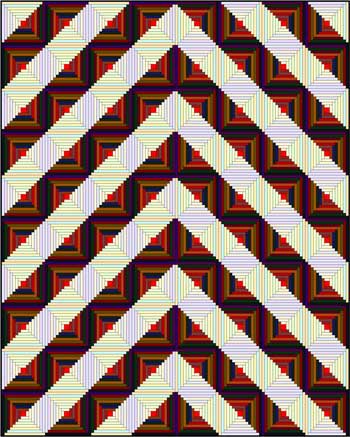 8x10
8x10Barn Raising
Concentric squares on point radiate out from the center. Prepare enough blocks for even numbers in both the rows and columns.
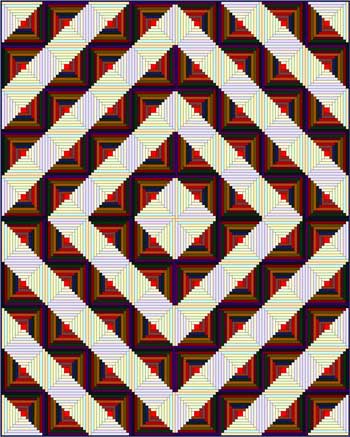 8x10
8x10Log Cabin Star
The strong diagonal line in a log cabin quilt block means oodles of design opportunities.
Any pattern with half square triangles can be created with Log Cabin blocks like this Sawtooth Star in a Barn Raising setting. Even numbers of rows and columns are needed to balance the design.
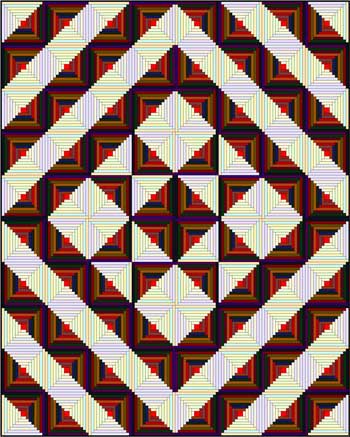 8x10
8x10Piecing Tip for Log Cabin Quilt Designs
Log Cabin quilt designs are a terrific way to use up your scraps
because the design is determined by the contrast between the light and dark
values of the logs.
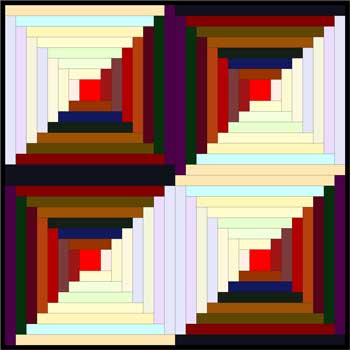 Notice how the purple strips draw your eye.
Notice how the purple strips draw your eye.The colors, the prints are unimportant as long as the values of the fabrics you choose are consistently dark or consistently light.
But no matter how many scraps you use, it never fails.
The same fabric ends up on the outside of a block more than once.
And as luck would have it, you find them 'touching' only after you're halfway through quilting your quilt.
It draws the eye where two like strips meet in an otherwise scrappy quilt, like the purple (left).
Drats!
What's a quilter to do?
For this scrappy design where every log is a different fabric, count the number of blocks you'll need for your quilt.
Multiply that number by 2.
You'll need strips from that many different light fabrics for the outside 'round' of logs.
Repeat the process for the dark fabrics. This way, there will be no duplicate fabrics in the outside rounds and no worries about like fabrics touching in your log cabin quilt design.
If each pair of logs of the same value (i.e. light or dark) is the same fabric, then you'll need as many fabrics as there are blocks to guarantee that two of the same don't end of touching each other.
For more on Log Cabins, check out:
- Log Cabin Quilt Designs—ideas for YOUR Log Cabin quilt patterns
- Log cabin quilts can be paper pieced—try it for yourself
- How to quilt a Streak of Lightning quilt—a Log Cabin quilting suggestion
